For weeks President Joe Biden and Donald Trump have been egging each other on, daring each other to an in-person debate. Yesterday, the two finally set the date. Then each texted their bases to fundraise off the news.
Around 8am Eastern, the Biden campaign texted his followers: “It’s Joe Biden. Four years ago, Trump lost two debates to me. Now he wants to debate again. And I’m in. Chip in $20 today to stand with me”.
A little slower to the jump, the Trump campaign texted his followers around 12:40pm Eastern: “Breaking From Trump: LET’S GET READY TO RUMBLE! DEBATE HAS BEEN SCHEDULED WITH CROOKED JOE!” followed by a link.
And around 6pm Eastern, Biden texted again with another lengthier message this time about revenge and retribution, with another call for donations.
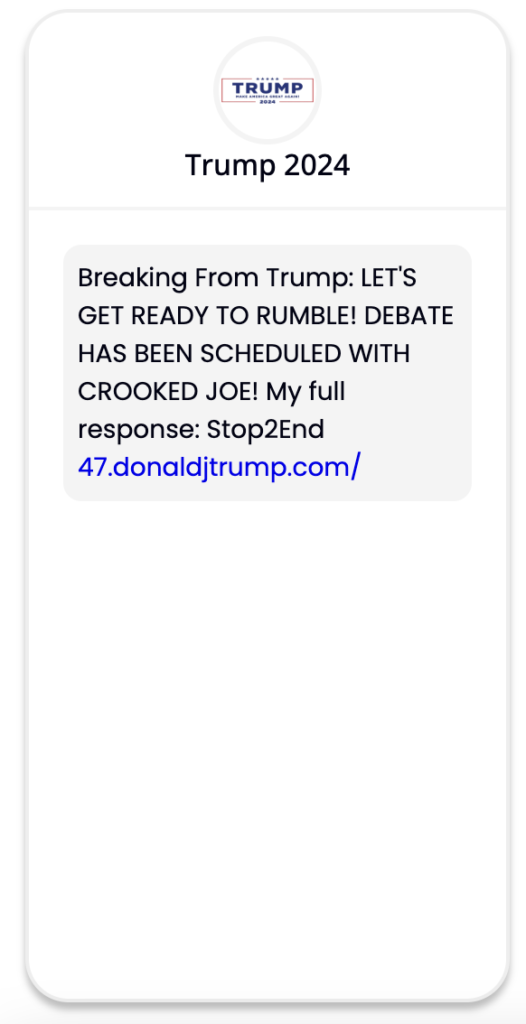

Texting provides political candidates with a direct channel to small donors. These donors, who contribute $200 or less, can make a huge impact on campaign coffers and the amount of small donations that a candidate can attract is an often cited measure of voter enthusiasm.
So how do candidates go about driving huge volumes of small donations, through a channel like text? Some analysts and strategists believe that the path to small donors requires appealing to idealogues, and the language we see in campaign texts often reflect that.
“Individual donors and spenders are among the most ideological sources of money (and are far more ideological than the average citizen). That’s particularly true of small donors.” Richard Pildes, a law professor at N.Y.U. and an expert in campaign finance, told the New York Times.
This might be why we see texts with an increasing emphasis on messages designed to make specific constituencies angry or afraid, often by demonizing the opposition. Tiny Texts publishes all the texts that political candidates send to their subscribers. We’ll take a look at their strategies below.
How Trump’s Campaign Sends Texts
The Trump campaign sends voters roughly 1 text per day. When a fundraising deadline is approaching, for example, just before the Q1 FEC reporting deadline, Trump’s texts increase to as many as 3 per day.
Perhaps this cadence appeals to the most passionate and tolerant of Trump voters. But others wonder if this is why Trump is not raising as many small dollars as he did in previous election cycles. In 2020, Trump and Biden raised comparable amounts in small donations ($378M and $406M respectively). In 2024, Trump has raised roughly half the small donations of Biden ($34M and $60M respectively), according to opensecrets.org.
“The biggest problem in GOP fundraising is that we don’t treat donors well,” John Hall, a Republican small-dollar fundraiser who runs the digital firm Apex Strategies, told the Washington Post. “Sending eight emails and texts a day that promise an artificial match, threaten to take away your GOP membership, or call you a traitor if you don’t donate doesn’t build a long-term relationship with donors.”
There was also a noticeable change in tone in the texts from the Trump campaign earlier this year, when the language was much more formal and somber. For example, before January 9, each text addressed the recipient as “Patriot”.
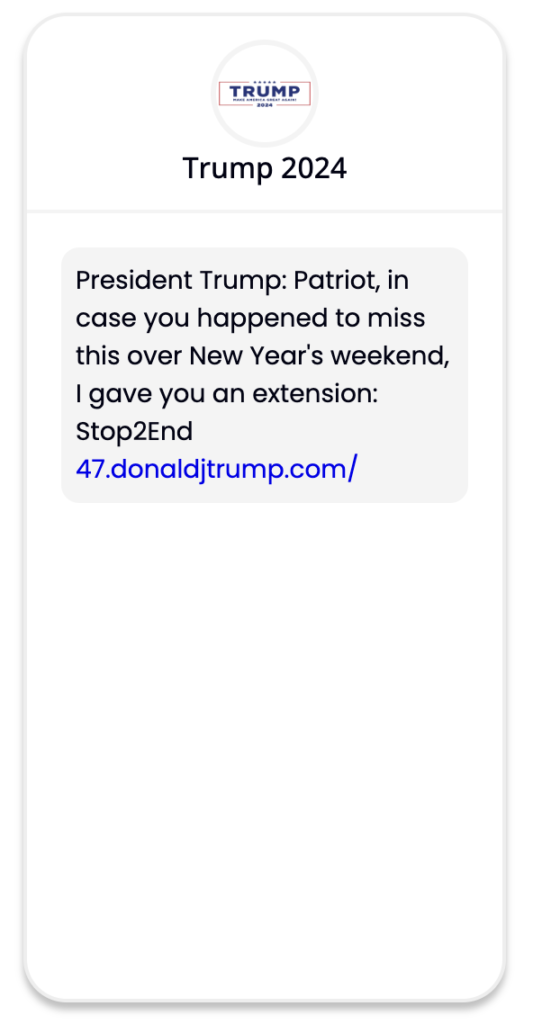

After January 9, the word patriot disappeared, and Trump’s texts took on a more emphatic tone. All caps and exclamation points became more common. Recent texts also include offers for prizes and merch, including trips to Mar-A-Lago and MAGA hats in a variety of colors like black, gold and camo.
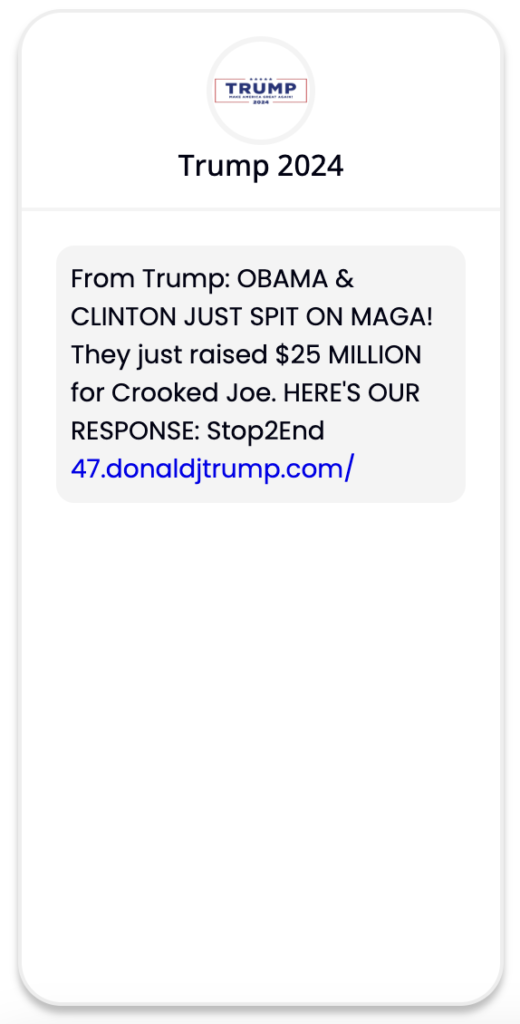

In April, the Washington Post reported that, for all Republican candidates, “The pitches that worked best included mentions of Trump being persecuted or prosecuted or coming under attack.” This sort of device is also being used more and more frequently in Trump’s texts, referring to Trump’s various trials and gag orders.
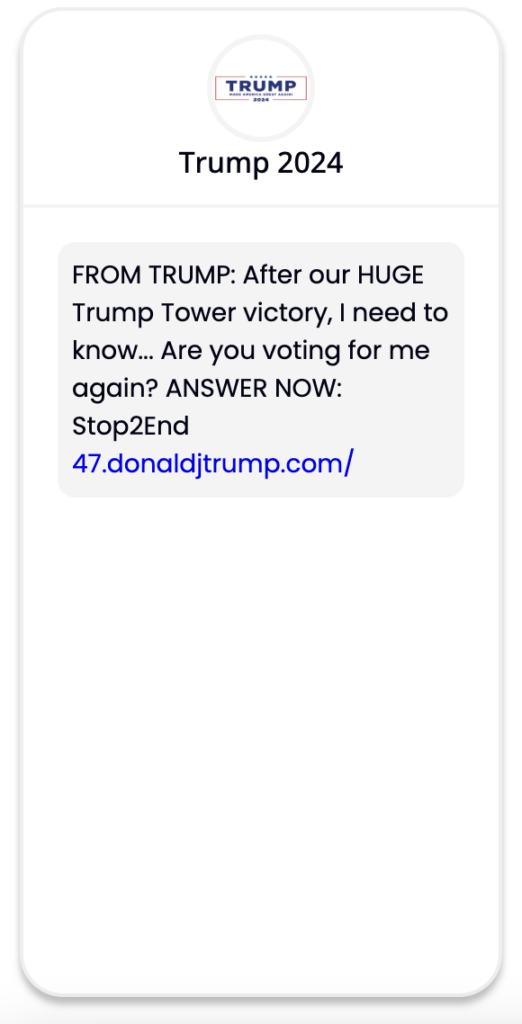
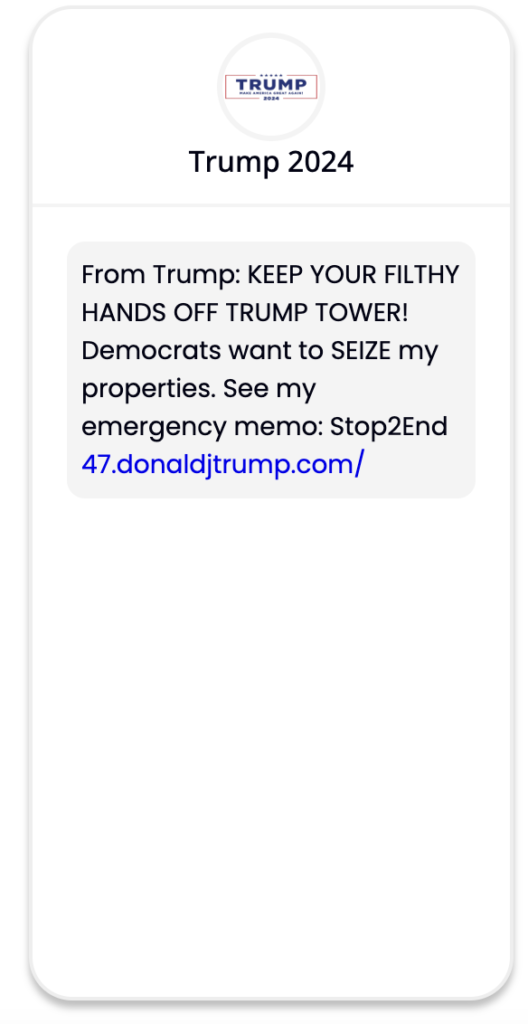
And for now, we still see texts being sent at a rapid clip from the Trump campaign even though campaign insiders suggest that small donors were getting fatigued by the frequent texts and emails. According to the Washington Post, Trump’s campaign chief of staff Susie Wiles is testing out “various strategies [to drive small donations], including fewer emails, toggling the number of pitches based on the week and trying various vendors.”
The First Political Texts
Presidential text messaging dates back to 2008. That year Barack Obama was the first candidate to employ text as a campaign tactic when he announced his VP pick by text message.
Seventeen magazine helped drive young subscribers, writing “Just text ‘VP’ to 62262, and Barack will text you his VP pick the second it’s announced! And when your friends ask who just texted you? You can say, ‘Oh, it’s just Barack.’ It doesn’t get much cooler than that! This is the first time a campaign will ever do this, so let’s make history!”
Eventually the announcement went out via 2.9 million text messages sent directly to Obama’s supporters. Of course, that’s when the world learned that Joe Biden would be Obama’s running mate. Once a novel tactic, now text is a big part of grassroots efforts to connect with voters, including in President Joe Biden’s bid to hold onto his office.
How Biden’s Campaign Uses Text Messaging
The Biden campaign campaign refrained from sending text messages throughout Q1. Campaign texts were turned off between December 23 and didn’t turn back on until March 21, just before the FEC reporting deadline. When they began again, the texts requested donations of $20 or $42.21, and sometimes offered the chance to meet Presidents Obama, Clinton and Biden and his wife Dr. Biden.
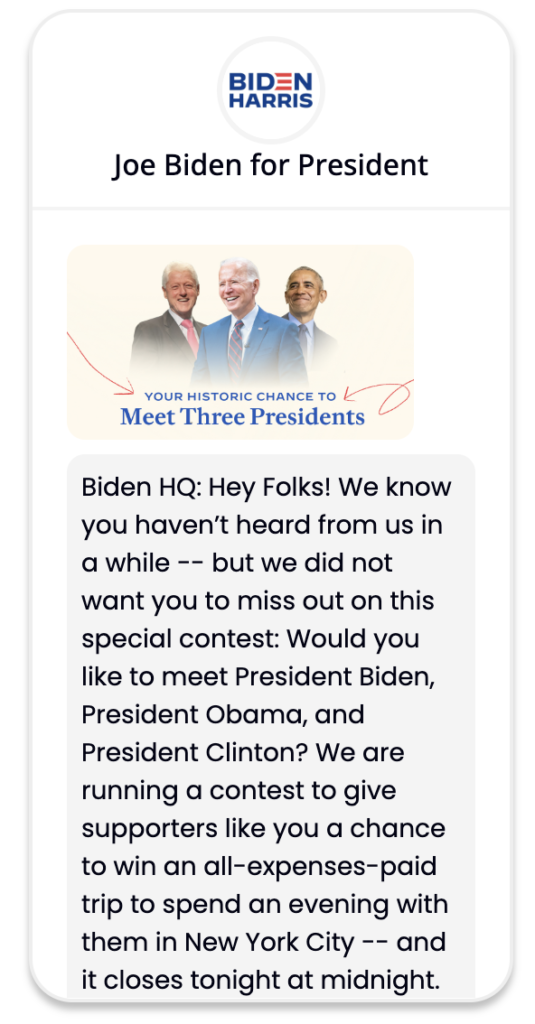

Biden’s texts frequently include images of himself and the vice president. It’s worth noting that this does cost twice as much. It costs about $0.1750 to send each SMS message and about $.04250 to send each MMS, or multimedia message, a message with an image or gif.
Occasionally Biden’s texts include pictures of and references to former president Trump’s position on hot-button issues, another strategy to motivate small donors.

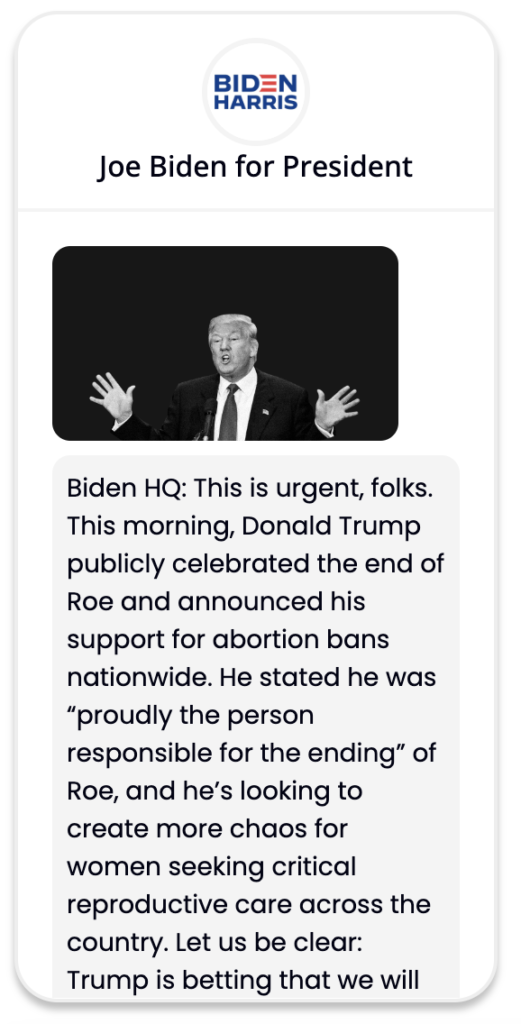
We have been keeping an eye on various other candidates like Robert F. Kennedy Jr., Katie Porter, and Josh Riley to understand broader texting trends.
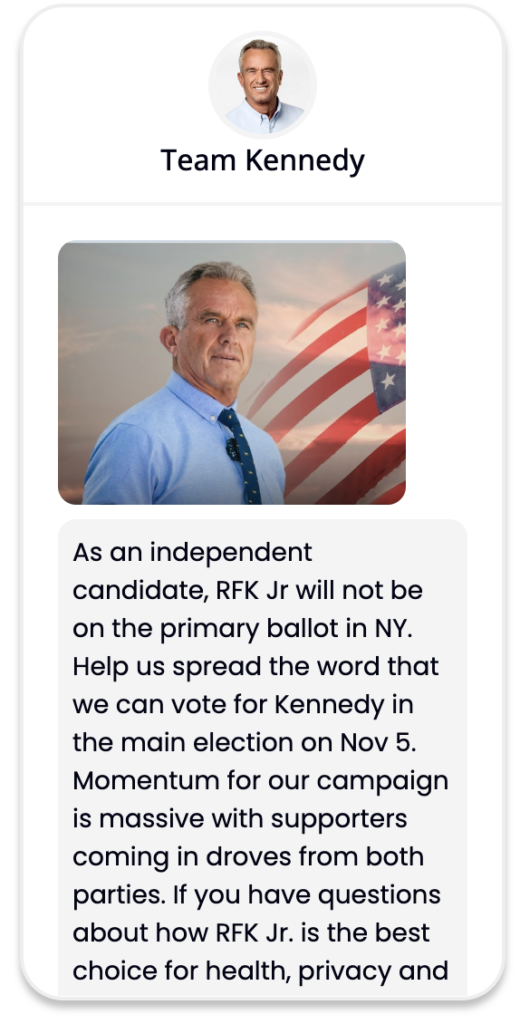

As the election gets closer we’ll continue to update our analysis here. Meanwhile visit Tiny Texts to browse texts from many other political candidates.